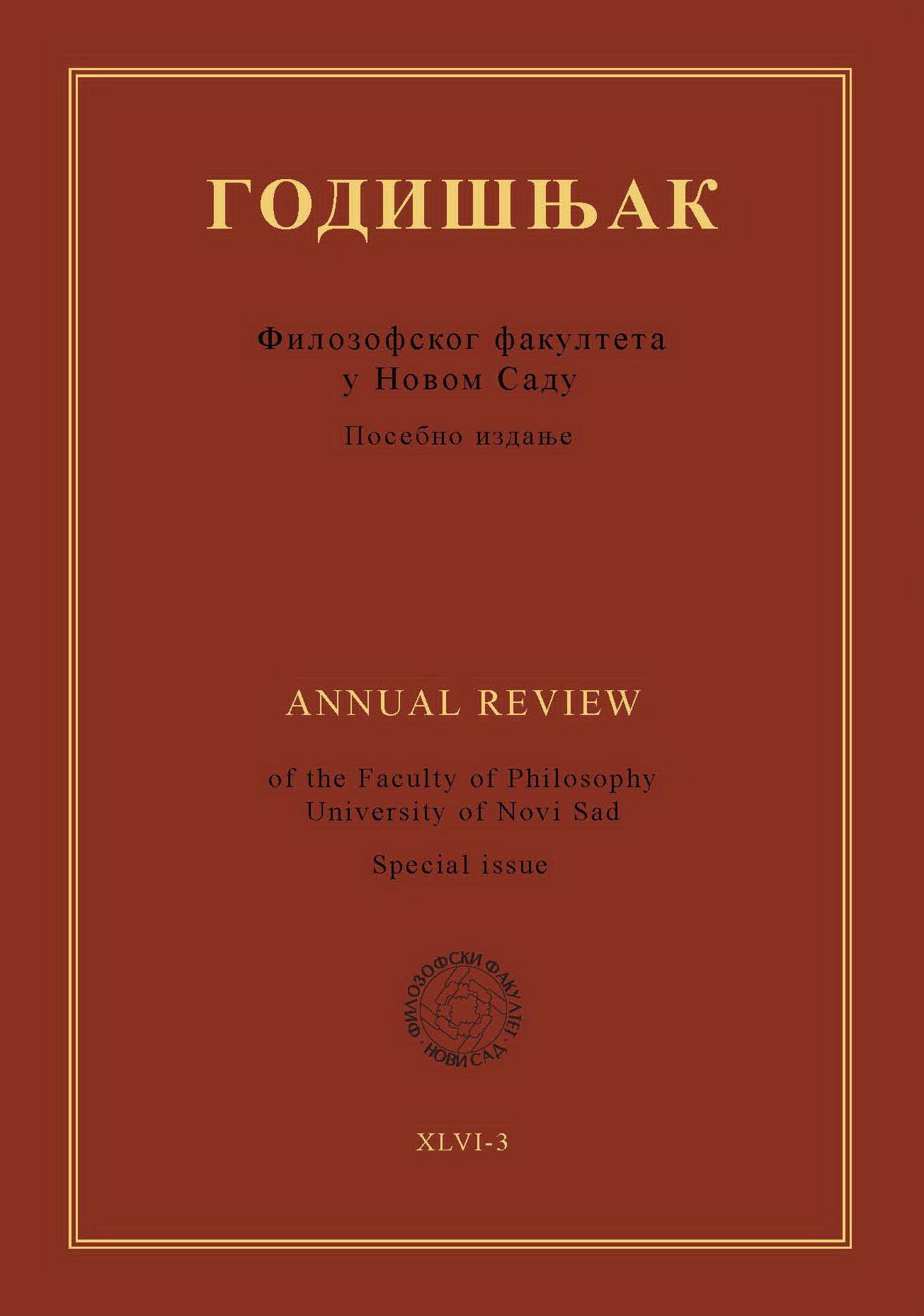TENSE, ASPECT AND CONSTRUCTION OF ASPECTUAL SENSE OF THE SENTENCE
Main Article Content
Abstract
Using the tools of formal semantics, we examine interactions between view point aspect and Aktionsart in the process of constructing the aspectual meaning of the sentence in French. If Klein's notion of topic time serves as a link between temporal and aspectual information conveyed by tense morphemes, it also allows us to understand why we must postulate, in certain cases, that the situation denoted by the predicate undergoes aspectual transformation.
Downloads
Article Details

This work is licensed under a Creative Commons Attribution-ShareAlike 4.0 International License.
References
Berthonneau, A.-M.Kleiber, G. (1993). Pour une nouvelle approche de l’imparfait : l’imparfait, un temps anaphorique méronomique. Langages 112, 5573. DOI: https://doi.org/10.3406/lgge.1993.1661
Caudal, P. (2012). Relations entre temps, aspect, modalité et évidentialité dans le système du français. Langue française, 173, 115129. DOI: https://doi.org/10.3917/lf.173.0115
Dowty, D. (1986). The effects of aspectual class on the temporal structure of discourse: semantics or pragmatics? Linguistics and Philosophy, 9, 3761. DOI: https://doi.org/10.1007/BF00627434
Garey, H. B. (1957). Verbal aspect in French. Language 33, 91110. DOI: https://doi.org/10.2307/410722
Helland, H. P. (1995). Futur simple et futur périphrastique : du sens aux emplois. Revue Romane, 30/1, 3–26.
Kamp, H.Reyle, U. (1993). From Discourse to Logic. Dordrecht : Kluwer. DOI: https://doi.org/10.1007/978-94-017-1616-1
Klein, W. (1992), The present perfect puzzle. Language, 68/3, 525–552. DOI: https://doi.org/10.2307/415793
Klein, W. (1995). Frame of Analysis. In: Dietrich, R.–Klein, W. & Noyau, C. (eds.) (1995). The Acquisition of Temporality in a Second Language. Amsterdam : J. Benjamins. 17–29. DOI: https://doi.org/10.1075/sibil.7.03kle
Klein, W. (2009). How time is encoded? In: Klein, W.–Li, P. (eds.). The expression of time. Berlin, New York : Mouton de Gruyter. 39–81. DOI: https://doi.org/10.1515/9783110199031.39
Krifka, M. (1992). Thematic Relations as Links between Nominal Reference and Temporal Constitution. In: Sag, I.–Szabolcsi, A. (eds) (1992). Lexical Matters. Stanford : CSLI. 29–53.
Montague, R. (1973). The Proper Treatment of Quantification in Ordinary English. In: Hintikka, J.–Moravcsik, J. & Suppes, P. (eds.) (1973). Approaches to Natural Language. Dordrecht : Reidel. 221–242. DOI: https://doi.org/10.1007/978-94-010-2506-5_10
Ogihara, T.Kusumoto K. (2020). The interpretation of tense: I didn't turn off the stove. In: Gutzmann, D.–Matthewson, L.–Meier, C.–Rullmann, H. & Zimmermann, T.-E. (ed.) (2020). The Wiley Blackwell Companion to Semantics. Hoboken : Wiley. DOI: https://doi.org/10.1002/9781118788516.sem092
Partee, B. H. (1973). Some structural analogies between tenses and pronouns in English. The Journal of Philosophy, 70, 601–609. DOI: https://doi.org/10.2307/2025024
Partee, B. H. (1984). Nominal and temporal anaphora. Linguistics and Philosophy, 7, 243–286. DOI: https://doi.org/10.1007/BF00627707
Prior, A. (1957). Time and Modality. Oxford : Clarendon Press.
Reichenbach, H. (1947). Elements of symbolic logic, New York : Macmillan Co.
Smith, C. (1991). The Parameter of Aspect. Dordrecht / Boston / London : Kluwer Academic Publishers. DOI: https://doi.org/10.1007/978-94-015-7911-7
Stanojević, V. (2019). Le temps et l’aspect en français et en serbe (Vreme i aspekat u francuskom i srpskom jeziku). Belgrade : Faculté de Philologie de l’Université de Belgrade.
Stanojević, V.Đurić, Lj. (2019). Aspekat kao fazna kategorija i rezultativnost u francuskom i srpskom jeziku. Srpski jezik 24.1, 221–23.
de Swart, H. (1998). Aspect shift and coercion. Natural language and linguistic theory 16, 347–85. DOI: https://doi.org/10.1023/A:1005916004600
von Stechow, A. (1995). On the Proper Treatment of Tense. In: Simons, M.Galloway T. (eds.) (1995). Proceedings from SALT V. Ithaca NY : CLC publications. 362–386. DOI: https://doi.org/10.3765/salt.v5i0.2700
Vendler, Z. (1967). Linguistics in Philosophy. Itaca : Cornel. DOI: https://doi.org/10.7591/9781501743726
Verkuyl, H. (1972). Aspectual classes and aspectual composition. Linguistics and Philosophy, 12, 39–94. DOI: https://doi.org/10.1007/BF00627398
Vet, C. (1980). Temps, aspects et adverbes de temps en français contemporain : Essai de sémantique formelle. Genève : Droz.
Vet, C. (2008). Six traits sémantiques suffisent à décrire tous les temps du français. In: Birkelund, M.Mosegaard Hansen, M.-B. & Norén, C. (éds.) (2008). L’énonciation dans tous ses états : Mélanges offerts à Henning Nølke à l’occasion de ses soixante ans. Berne : Peter Lang. 451471.
Vet, C. (2010). L’interprétation des formes composées. In: Stosic, D.Flaux, N. & Vet C. (ed.) (2010). Interpréter les temps verbaux. Berne : Peter Lang. 11–31.
Vet, C. (2011). L’aspect grammatical en français. In: Neveu F.Blumenthal P. & Le Querler N. (ed.) (2011). Au commencement était le verbe – Syntaxe, sémantique et cognition. Berne : Peter Lang, 443465.
Vetters, C. (1996). Temps, aspect et narration, AmsterdamAtlanta, GA : Rodopi.




